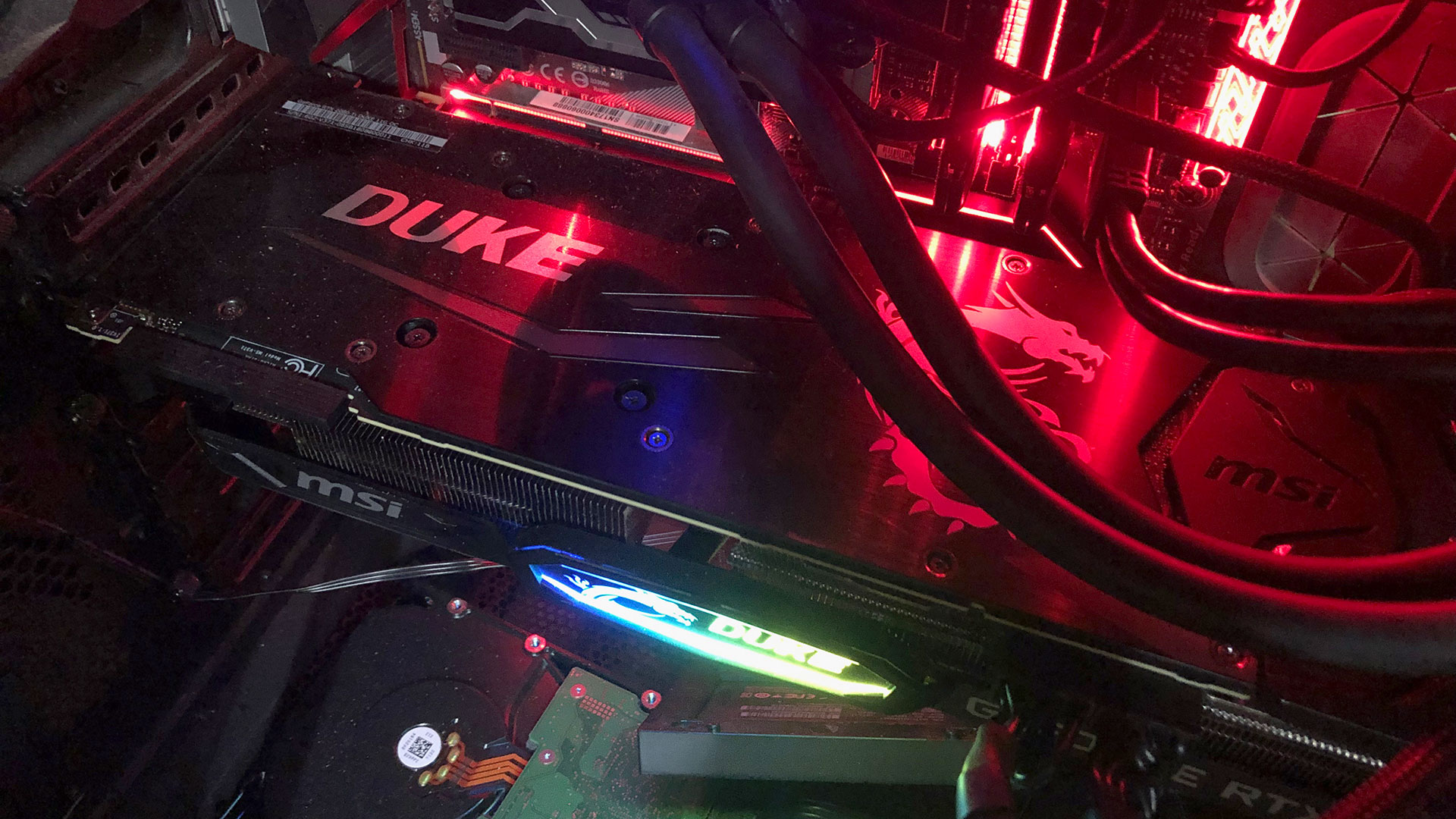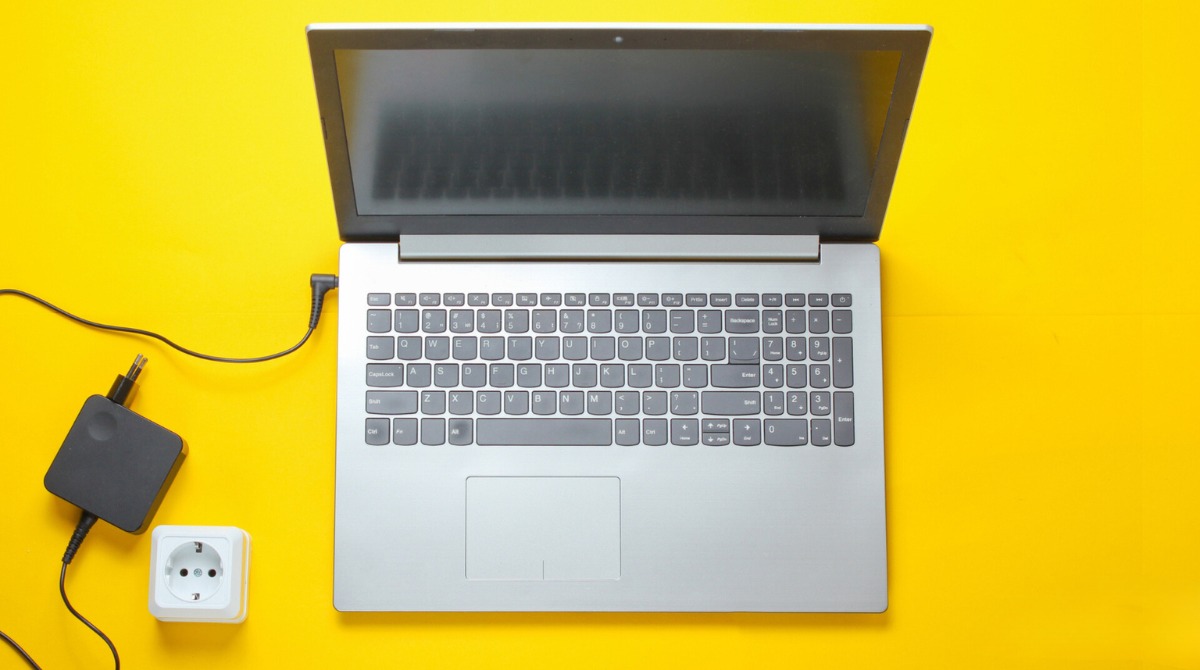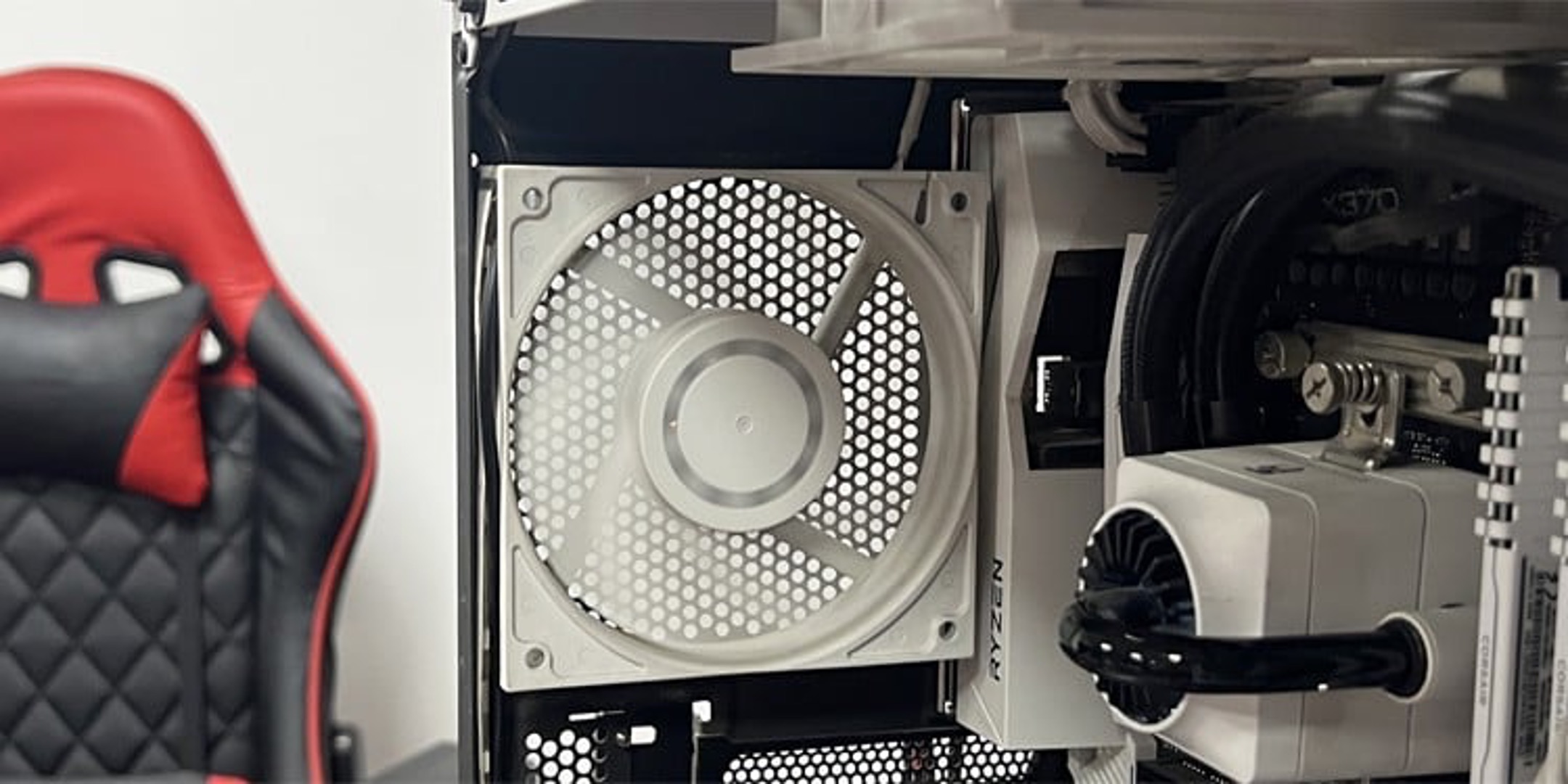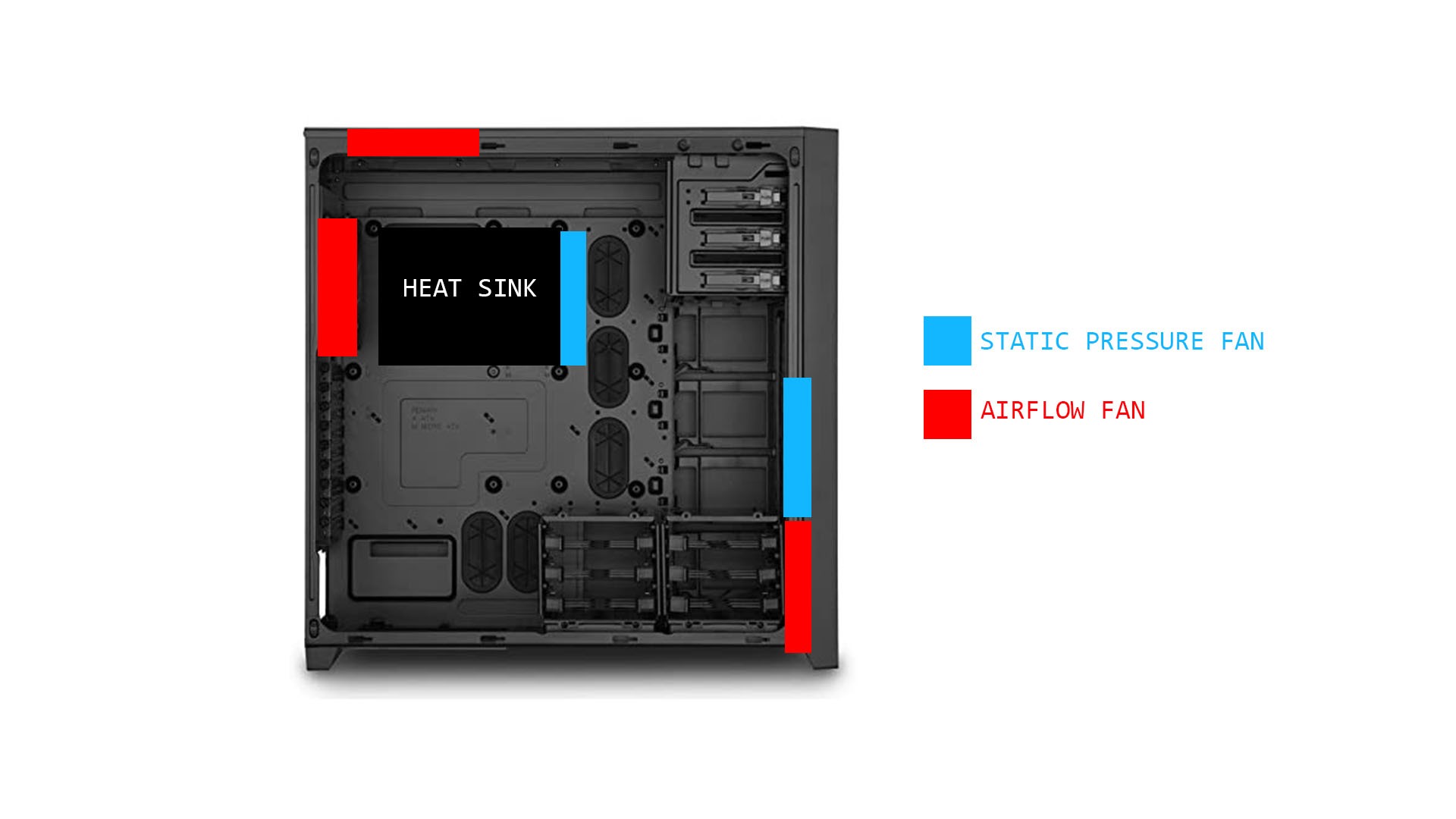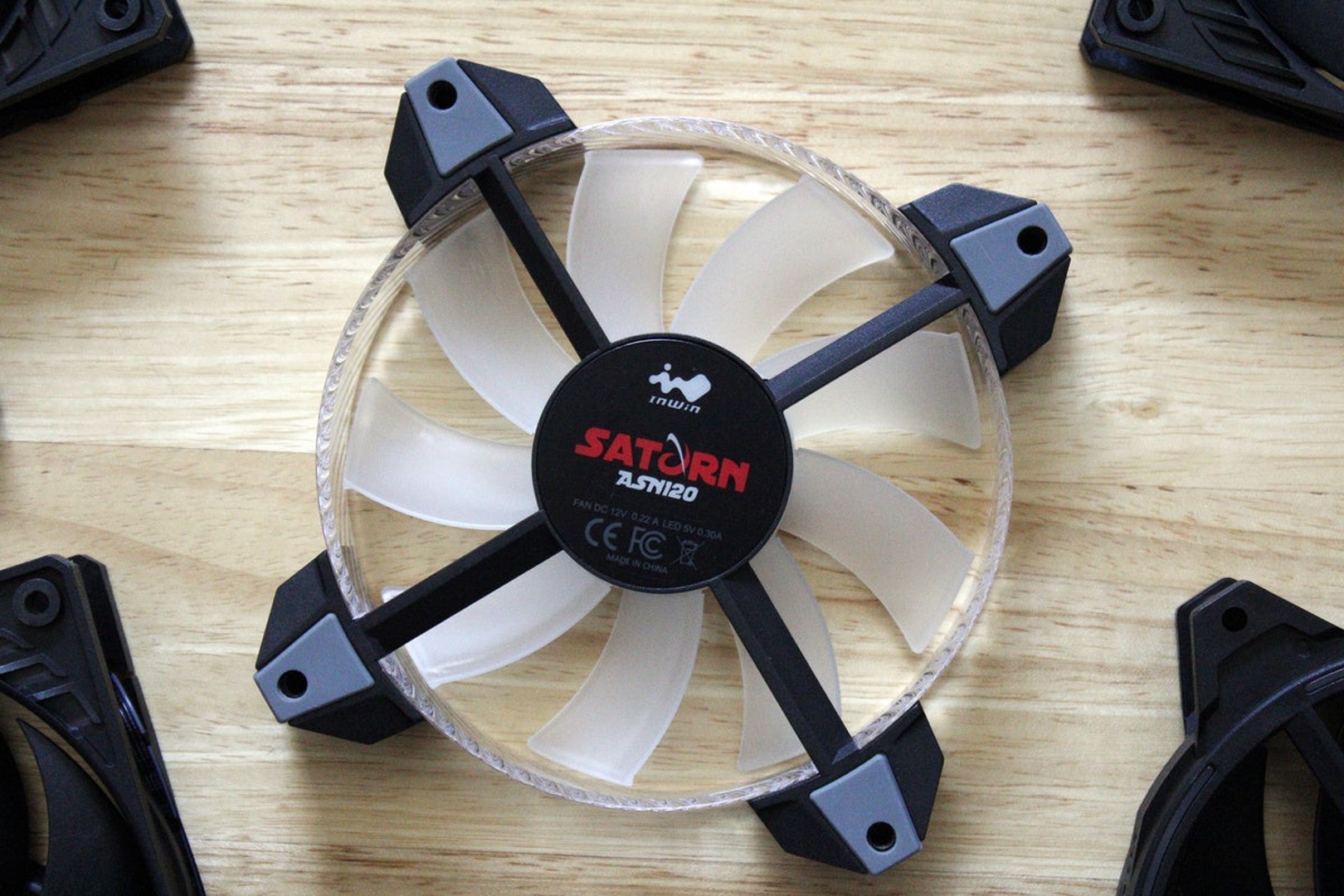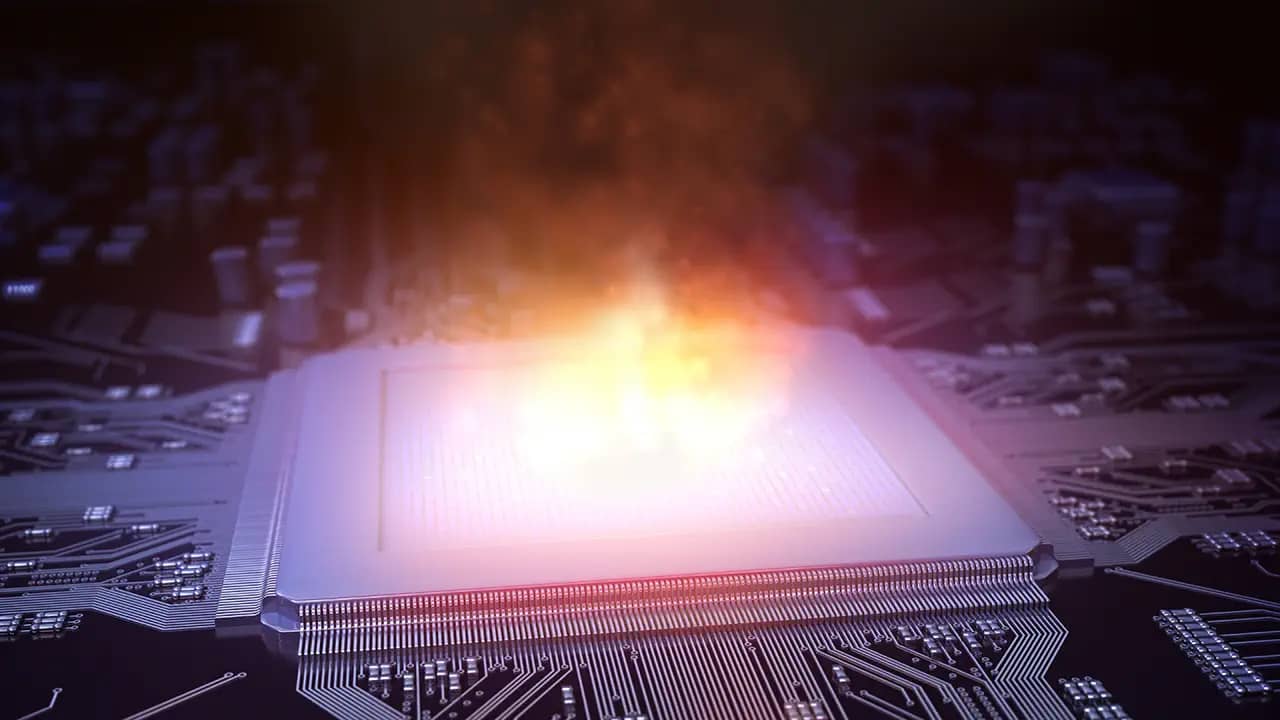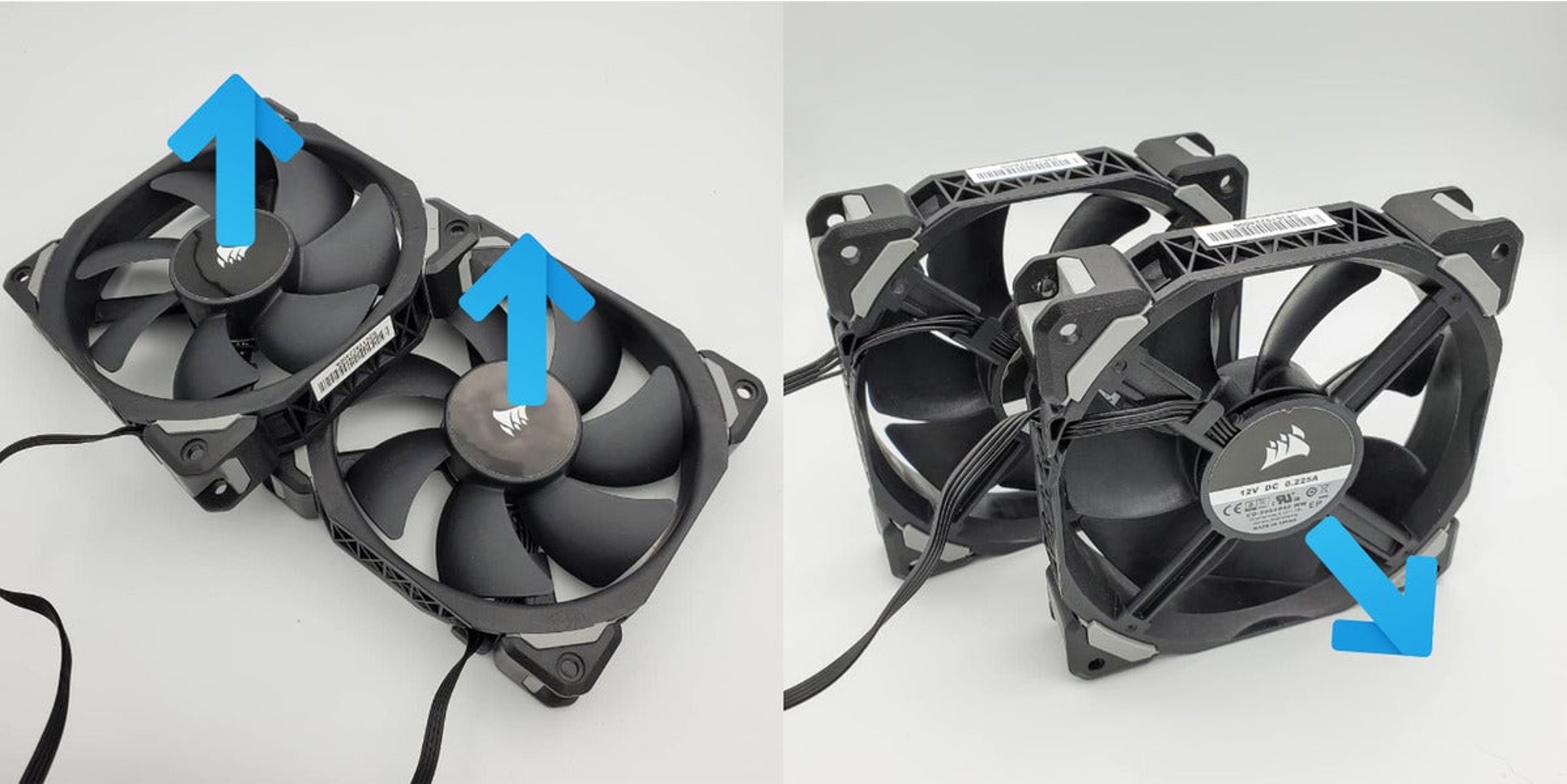Introduction
Welcome to the world of modern computing, where high-performance graphics cards have become a crucial component for anyone looking to maximize their digital experience. However, if you’ve noticed that your graphics card is running hotter than usual, you may be wondering why it’s happening and what you can do about it.
Graphics cards, also known as GPUs (Graphics Processing Units), are responsible for rendering images, videos, and animations on your computer screen. As they work tirelessly to deliver stunning visuals, they generate a significant amount of heat. While some heat is normal and expected, excessive heat can lead to performance issues and even hardware damage.
In this article, we will explore why your graphics card is getting hot, the effects of overheating, common causes of overheating, how to check if your graphics card is too hot, and most importantly, how to prevent it from overheating. By the end, you’ll have a better understanding of how to keep your graphics card cool and maintain optimal performance.
So, let’s dive in and discover the reasons behind that fiery hot graphics card of yours!
Why does my graphics card get hot?
Graphics cards can heat up for several reasons, primarily due to the intense workload they handle when running graphics-intensive applications or games. Let’s take a closer look at some of the key factors that contribute to the heat buildup on your graphics card:
1. Power consumption: Modern graphics cards are power-hungry devices, requiring a significant amount of electricity to handle complex computations. The more power it consumes, the more heat it generates.
2. Thermal design: Graphics cards come with a built-in cooling system that consists of cooling fans, heat sinks, and thermal pads. However, some graphics cards have more efficient cooling designs than others, leading to varying levels of heat dissipation.
3. GPU load: When you run graphics-intensive tasks, such as playing high-resolution games or editing 3D models, your GPU works harder and generates more heat. The higher the GPU load, the hotter your graphics card will become.
4. Ambient temperature: The temperature of the environment in which your computer operates also affects the heat buildup in your graphics card. If your computer is in a poorly ventilated area or if the ambient temperature is high, it can exacerbate the heat-related issues.
5. Aging hardware: Over time, the thermal paste and thermal pads that provide a transfer of heat between the GPU and the cooling system may deteriorate, leading to reduced efficiency in heat dissipation and increased temperatures.
6. Poor airflow: If your computer case lacks proper airflow or if the fans are not working efficiently, hot air can get trapped inside, causing the temperature inside the case to rise and affecting the graphics card as well.
Understanding why your graphics card gets hot is essential in finding effective solutions to prevent overheating. By addressing these factors, you can ensure optimal performance and longevity of your graphics card. In the next section, we’ll explore the potential effects of overheating to emphasize the importance of keeping your graphics card cool.
Effects of overheating
When your graphics card overheats, it can have detrimental effects on both its performance and lifespan. Here are some of the potential consequences of letting your graphics card reach extreme temperatures:
1. Reduced performance: One of the immediate consequences of overheating is a noticeable drop in your graphics card’s performance. As the temperature rises, the GPU may throttle itself to avoid further heat buildup, resulting in lower clock speeds and decreased frame rates in games or sluggish performance during graphics-intensive tasks.
2. Artifacts and visual glitches: Overheating can lead to visual artifacts appearing on your screen, such as flickering, texture distortion, or random pixels displaying incorrect colors. These artifacts can significantly impact your gaming or viewing experience and may indicate potential damage to your graphics card.
3. System instability and crashes: Excessive heat can cause your computer to become unstable, with frequent system crashes, sudden reboots, or even the dreaded “blue screen of death” (BSOD). These issues occur when the graphics card fails to function properly due to thermal stress.
4. Decreased lifespan: Continuous exposure to high temperatures can significantly reduce the lifespan of your graphics card. Over time, the excessive heat can cause damage to the delicate electronic components, such as the GPU, VRAM, or power delivery circuits, leading to premature failure and the need for a costly replacement.
5. Risk of permanent damage: If the temperature reaches critical levels, the graphics card can suffer irreversible damage. This can result in total failure of the GPU or even pose a risk of fire, presenting a serious safety hazard.
6. Voided warranty: It’s worth noting that manufacturers often have specific temperature limits for their graphics cards. If your graphics card fails due to overheating, and it is determined that the cause was neglect or improper usage, it may void the warranty, leaving you responsible for any repair or replacement costs.
Understanding the potential effects of overheating reinforces the importance of addressing and preventing excessive heat buildup in your graphics card. In the following sections, we will explore the common causes of overheating and provide practical tips on how to keep your graphics card cool.
Common causes of overheating
Understanding the common causes of overheating is crucial in effectively managing and preventing excessive heat buildup in your graphics card. Let’s explore some of the most prevalent factors that contribute to overheating:
1. Dust accumulation: Over time, dust and debris can accumulate on the cooling components of your graphics card, inhibiting proper airflow and heat dissipation. This buildup acts as an insulating layer, trapping heat and causing the temperature to rise.
2. Inadequate cooling system: Some graphics cards may come with subpar cooling systems, including smaller fans, fewer heat pipes, or inadequate heat sinks. These limitations can impede the ability of the cooling system to effectively dissipate heat, resulting in higher temperatures.
3. High performance demands: Running demanding applications or games that push your graphics card to its limits can generate more heat than it can effectively handle. The sustained high workload can lead to increased temperatures and potential overheating if not properly managed.
4. Overclocking: Overclocking involves increasing the clock speeds of your graphics card to achieve higher performance. While it can boost performance, it also generates more heat. Without proper cooling or voltage control, overclocking can push your graphics card beyond its thermal limits, resulting in overheating.
5. Poor case airflow: Improper case airflow can contribute to the buildup of hot air inside your computer. If warm air isn’t efficiently expelled from the case and cool air isn’t drawn in, it can lead to higher ambient temperatures and increased heat transfer to your graphics card.
By being aware of these common causes of overheating, you can take proactive measures to mitigate the risk and maintain optimal temperatures for your graphics card. In the next section, we will explore various methods to check if your graphics card is getting too hot, ensuring you can detect potential issues before they become major problems.
Dust accumulation
Dust accumulation is one of the most common causes of overheating in graphics cards. Over time, dust particles settle on the cooling components, such as the fans, heat sinks, and vents, impeding proper airflow and heat dissipation. This buildup acts as an insulating layer, trapping heat and causing the temperature to rise. Here’s how dust accumulation affects the cooling efficiency of your graphics card:
1. Restricted airflow: Dust clogs up the small spaces between the cooling fins and inhibits the movement of air. This restriction reduces the amount of cool air that reaches the heat sinks and increases the temperature of the graphics card.
2. Fan performance degradation: Dust particles can accumulate on the fan blades, making them heavier and reducing their ability to spin at the optimum speed. This decrease in fan performance hampers the airflow, diminishing the cooling capacity of the graphics card.
3. Increased heat retention: As dust accumulates, it forms a layer that traps heat emitted by the graphics card. This trapped heat prevents the cooling system from efficiently dissipating heat, leading to higher temperatures inside the graphics card.
To prevent dust accumulation and maintain optimal cooling performance, it’s essential to regularly clean your graphics card. Here are some tips to effectively remove dust from your graphics card:
1. Turn off and unplug your computer: Before cleaning, ensure that your computer is completely shut down and unplugged from the power source to avoid any potential electrical hazards.
2. Use compressed air: Use a can of compressed air to blow away dust from the cooling components, such as the fans, heat sinks, and vents. Aim the nozzle at an angle to dislodge the dust particles effectively.
3. Soft brush or microfiber cloth: For more stubborn dust accumulation, you can use a soft brush or a microfiber cloth to gently wipe away the dust. Be careful not to apply excessive pressure, as it may damage delicate components.
4. Avoid vacuum cleaners: While it may be tempting to use a vacuum cleaner, it can generate static electricity and potentially damage sensitive electronics. Stick to compressed air, brushes, or microfiber cloths for safe and effective cleaning.
Regularly cleaning your graphics card and ensuring it remains free from dust buildup can significantly improve its cooling efficiency and help prevent overheating. By addressing dust accumulation, you take a crucial step in maintaining your graphics card’s performance and longevity.
Inadequate cooling system
An inadequate cooling system is another common cause of overheating in graphics cards. Graphics cards come with built-in cooling mechanisms, including fans, heat sinks, and thermal pads, designed to dissipate heat generated by the GPU. However, some graphics cards may have less efficient cooling systems, which can lead to inadequate heat dissipation, increased temperatures, and potential overheating. Here are some factors that contribute to an inadequate cooling system:
1. Insufficient fan design: Some graphics cards may have smaller or fewer fans, limiting the airflow and reducing the overall cooling capacity. This lack of airflow can impede the cooling process and result in higher temperatures.
2. Inadequate heat sink: Heat sinks are responsible for absorbing and dispersing heat away from the GPU. If a graphics card has a small or insufficiently designed heat sink, it may struggle to efficiently transfer and dissipate heat, leading to higher temperatures.
3. Thermal compound degradation: The thermal compound, also known as thermal paste, helps improve heat transfer between the GPU and the heat sink. Over time, the thermal compound can degrade, losing its effectiveness in facilitating heat dissipation. This degradation can result in poor heat transfer and increased temperatures.
4. Poor case ventilation: A poorly ventilated computer case can impede the flow of cool air into the graphics card area and hinder the expulsion of hot air. Without proper case ventilation, the cooling system of the graphics card may struggle to maintain optimal temperatures.
If you suspect that your graphics card has an inadequate cooling system, there are a few solutions to consider:
1. Upgrade the cooling system: If your graphics card allows for aftermarket cooling solutions, you can consider upgrading to a more efficient cooling system. This may involve adding additional fans, installing a larger heat sink, or utilizing liquid cooling options.
2. Adjust fan speeds: If your graphics card has fan control software, you can manually adjust fan speeds to run at higher RPMs. This can help increase airflow and improve heat dissipation, although it may result in slightly higher noise levels.
3. Monitor temperature levels: Regularly monitor the temperature of your graphics card using monitoring software. This will help you determine if the cooling system is inadequate and if further intervention is required.
Addressing an inadequate cooling system is crucial in maintaining optimal temperatures for your graphics card. By ensuring efficient heat dissipation, you can help prevent overheating and extend the lifespan of your graphics card.
Performance demands
Graphics cards are built to handle the demanding tasks of rendering high-quality graphics, running graphically-intensive applications, and powering visually stunning games. However, these tasks push the GPU to its limits, generating a significant amount of heat. The performance demands placed on your graphics card can contribute to increased temperatures and potential overheating. Here are some factors related to performance demands that can lead to overheating:
1. High graphics settings: Running games or applications at high graphics settings requires more processing power from your graphics card. The increased workload generates more heat, putting additional strain on the cooling system.
2. Display resolution: Higher display resolutions, such as 4K or ultra-wide monitors, demand more graphical processing power. This increased workload can cause the GPU to work harder and generate more heat as it renders higher pixel densities.
3. Multi-monitor setups: Utilizing multiple monitors increases the workload on your graphics card, as it needs to render graphics across multiple displays simultaneously. This increased workload can lead to higher temperatures if the cooling system is not capable of dissipating the extra heat effectively.
4. Virtual Reality (VR) applications: VR applications require a significant amount of processing power to render immersive and realistic experiences. The demand for high frame rates and low latency in VR can put a strain on the graphics card, leading to increased heat generation.
5. Extended periods of usage: Extended gaming sessions or running graphically-intensive tasks for prolonged periods can cause a continuous build-up of heat. Without adequate cooling, this accumulation of heat can push the graphics card’s temperature to dangerous levels.
While it is normal for a graphics card to get warmer during demanding tasks, it is crucial to monitor the temperatures to ensure they remain within safe limits. Using monitoring software, you can keep an eye on the temperature and manage performance demands accordingly. If you notice the temperatures consistently reaching high levels and your graphics card is at risk of overheating, it’s essential to take the necessary precautions to prevent damage or system instability.
By balancing the performance demands placed on your graphics card with proper cooling methods, you can ensure optimal performance and prevent overheating-related issues. In the next section, we will delve into the world of overclocking and its impact on your graphics card’s temperature.
Overclocking
Overclocking is the practice of increasing the clock speeds of your graphics card beyond the manufacturer’s specifications to achieve higher performance. While overclocking can enhance the graphics card’s capabilities and improve gaming experiences, it also generates more heat. Here’s how overclocking can impact your graphics card’s temperature:
1. Increased power consumption: When you overclock your graphics card, it requires additional voltage and power to sustain the higher clock speeds. This increased power consumption leads to higher heat generation, contributing to higher temperatures.
2. Greater heat output: Overclocking results in a more significant workload for the GPU, causing it to work harder and generate more heat. The increased heat output can overwhelm the cooling system if it’s not capable of dissipating the heat efficiently.
3. Greater dependency on cooling: Overclocking puts a higher demand on the cooling system’s performance as it needs to cope with the increased heat produced by the overclocked GPU. Inadequate cooling can result in higher temperatures and potential overheating.
It’s important to note that not all graphics cards are created equal, and their overclocking potential can vary. Some graphics cards have more headroom for overclocking, while others may have limited overclocking capabilities due to design constraints. Additionally, pushing your graphics card too far beyond its limits can pose risks and lead to instability or even damage to the card.
If you choose to overclock your graphics card, it’s crucial to pay attention to temperature management. Here are some tips to consider:
1. Monitor temperatures: Use monitoring software to keep an eye on the temperatures while overclocking. It will help you identify if the temperatures are reaching unsafe levels and if additional cooling measures are necessary.
2. Increase fan speed: Adjusting fan speeds to run at higher RPMs can provide increased airflow and improved heat dissipation. However, this may result in increased noise levels, so it’s important to find a balance that suits both performance and noise preferences.
3. Consider aftermarket cooling solutions: If you plan to heavily overclock your graphics card, investing in aftermarket cooling solutions, such as larger heatsinks or liquid cooling, can help manage higher temperatures more effectively.
Before attempting any overclocking, it’s essential to do thorough research, understand the potential risks, and ensure you have adequate cooling measures in place. By carefully managing temperatures while overclocking, you can push the performance boundaries of your graphics card without compromising its longevity or stability.
How to check if your graphics card is getting too hot
Monitoring the temperature of your graphics card is crucial to ensure it is operating within safe limits and to identify potential overheating issues. Here are a few methods you can use to check if your graphics card is getting too hot:
1. Monitoring software: Utilize monitoring software specifically designed to track the temperature of your graphics card. Popular software options include MSI Afterburner, GPU-Z, and HWMonitor. These programs provide real-time temperature readings, allowing you to keep a close eye on the temperature while your graphics card is under load.
2. Manufacturer-provided software: Some graphics card manufacturers offer their own monitoring software. These programs often come bundled with the drivers for your graphics card and provide detailed information about temperature, fan speed, and other important metrics.
3. BIOS/UEFI: Many motherboards have built-in temperature sensors that can monitor the temperature of hardware components, including the graphics card. You can access this information through the BIOS/UEFI settings of your motherboard.
4. Physical signs of overheating: If you don’t have access to monitoring software or settings, you can visually inspect your graphics card for physical signs of overheating. Look for symptoms such as warped PCB, burnt components, or a strong smell of burning. These signs indicate that your graphics card has reached extremely high temperatures and should be addressed immediately.
Once you have determined that your graphics card is reaching unsafe temperatures, it’s important to take immediate action to prevent further damage. In the next section, we will discuss various methods to prevent overheating and keep your graphics card operating within optimal temperature ranges.
Monitoring software
Monitoring software plays a crucial role in keeping an eye on the temperature of your graphics card and ensuring it operates within safe limits. These software applications provide real-time temperature readings, allowing you to monitor the heat generated by your graphics card during normal usage or under heavy loads. Here’s how monitoring software can help you keep track of your graphics card’s temperature:
1. Real-time temperature monitoring: Monitoring software provides accurate and up-to-date temperature readings of your graphics card. You can see the current temperature, as well as the highest temperature reached during a specific period, allowing you to assess if your graphics card is overheating.
2. Temperature alerts and notifications: Some monitoring software allows you to set temperature thresholds and receive notifications when those thresholds are exceeded. This feature can be especially useful if you’re running graphics-intensive tasks for extended periods, as it provides an early warning system to prevent overheating.
3. Additional system information: Along with temperature readings, monitoring software often provides other valuable information about your graphics card, such as fan speeds, clock speeds, and usage percentages. This information can help you understand the overall performance and stress levels of your graphics card.
4. Customizable monitoring overlays: Some monitoring software offers the ability to display temperature and other metrics as an overlay on your screen. This allows you to monitor your graphics card’s temperature without having to exit or minimize your applications, making it convenient for monitoring while gaming or performing other tasks.
There are several popular monitoring software options available, each with its own interface and features. Some commonly used programs include MSI Afterburner, GPU-Z, HWMonitor, and EVGA Precision X. It’s important to choose a monitoring software that is compatible with your graphics card and suits your needs.
By using monitoring software, you can stay informed about your graphics card’s temperature and take necessary steps to prevent overheating. Whether you’re a gamer, professional graphic designer, or just an avid computer user, monitoring software is a valuable tool to ensure your graphics card operates within safe temperature ranges.
Physical signs of overheating
While monitoring software provides valuable real-time temperature readings, it’s also essential to be aware of physical signs that indicate your graphics card is experiencing overheating issues. By recognizing these signs, you can take immediate action to prevent further damage. Here are some physical signs of overheating to watch out for:
1. Warped PCB: Overheating can cause the printed circuit board (PCB) of your graphics card to warp or bend. This deformation is often visible and indicates that the intense heat has impacted the structural integrity of the graphics card.
2. Burnt components: In extreme cases of overheating, certain components on the graphics card can become visibly burnt or discolored. This indicates that the excessive heat has damaged or compromised these specific areas.
3. Strong odor of burning: Overheating can produce a distinct smell of burning or overheated electronics. If you notice this smell coming from your computer or specifically from the graphics card, it’s a strong indication of temperature-related issues that need immediate attention.
4. Artifacting and visual glitches: Overheating can manifest in graphical artifacts and visual glitches on your screen, such as flickering, distorted textures, or random pixels displaying incorrect colors. These visual abnormalities are caused by the graphics card struggling to function optimally due to the excessive heat.
5. Sudden system crashes or instability: Overheating can result in sudden system crashes, freezes, or general instability. If you experience frequent crashes or abnormal behavior during graphics-intensive tasks, it could be a sign that your graphics card is overheating and failing under the stress.
If you observe any of these physical signs of overheating, it’s crucial to take immediate action to prevent further damage to your graphics card. Here are some steps you can take:
1. Shut down and cool off: Turn off your computer and allow it to cool down. This will help dissipate the heat and prevent further damage to the graphics card.
2. Check and clean: Inspect your graphics card for any signs of dust accumulation, blockages, or damaged fans. Clean or replace any components as necessary to ensure proper airflow and cooling.
3. Improve airflow: Make sure your computer case has adequate airflow by optimizing cable management, removing obstructions, and ensuring that intake and exhaust fans are functioning properly.
4. Consider professional help: If you’re unsure or uncomfortable performing these steps yourself, it may be helpful to seek the assistance of a professional technician who can diagnose and resolve the overheating issue.
By recognizing the physical signs of overheating and taking prompt action, you can prevent further damage to your graphics card and potentially avoid costly repairs or replacements. Regular monitoring and maintenance are key to ensuring that your graphics card operates within safe temperature ranges and maintains optimal performance.
How to prevent overheating
Preventing overheating is essential for maintaining optimal performance and prolonging the lifespan of your graphics card. By implementing the following preventive measures, you can reduce the risk of overheating and ensure that your graphics card operates within safe temperature ranges:
1. Keep your computer clean: Regularly clean the inside of your computer case, including the fans, heat sinks, and vents, to remove dust and debris that can obstruct airflow. Use compressed air or a soft brush to carefully clean these components and ensure optimal heat dissipation.
2. Improve airflow and ventilation: Ensure that your computer case has proper airflow by managing cables and removing any obstructions that could impede the movement of air. Position your computer in a well-ventilated area or consider using additional case fans or a ventilation system to improve air circulation.
3. Use adequate cooling methods: Invest in quality cooling solutions for your graphics card, such as aftermarket coolers or liquid cooling systems. These can provide superior heat dissipation and keep the temperature of your graphics card at optimal levels, especially during intense gaming or demanding workloads.
4. Avoid overclocking: While overclocking can provide performance boosts, it significantly increases heat generation. If you’re concerned about temperatures, refrain from overclocking your graphics card or ensure that you have sufficient cooling solutions in place to handle the additional heat generated.
5. Monitor temperature levels: Continuously monitor the temperature of your graphics card using software tools. Regularly check temperature readings and ensure that they remain within safe operating limits. If temperatures consistently reach high levels, take necessary measures to address potential cooling issues promptly.
6. Maintain up-to-date drivers: Ensure that your graphics card drivers are up to date. Graphics card driver updates often include performance optimizations and improvements that can help reduce unnecessary heating and improve the overall efficiency of your graphics card.
7. Avoid blocking air vents: Keep your computer’s air vents free from obstruction to allow for proper airflow. Avoid placing your computer in enclosed spaces or covering vents with objects that can restrict the flow of air and contribute to heat buildup.
8. Regularly inspect and replace thermal paste: Over time, the thermal paste between the GPU and heat sink can dry out or become less effective, diminishing heat transfer. Inspect the thermal paste periodically and replace it if necessary to ensure optimal heat dissipation.
By following these preventative measures, you can significantly reduce the risk of overheating and ensure the longevity and optimal performance of your graphics card. Keeping your graphics card cool and operating within safe temperature ranges is crucial for a smooth and enjoyable computing experience.
Keep your computer clean
Maintaining a clean computer is essential for preventing overheating and ensuring the optimal performance of your graphics card. Over time, dust and debris can accumulate inside your computer case, hindering proper airflow and heat dissipation. Here are some steps to keep your computer clean and minimize the risk of overheating:
1. Regularly clean the inside of your computer case: Open up your computer case and use compressed air or a soft brush to remove any dust or debris from the fans, heat sinks, and other components. Pay close attention to the areas around the graphics card and ensure that airflow pathways are clear.
2. Clean or replace the fans: Dust can cling to the fan blades and hinder their efficiency. Remove the fans from your case and gently clean them using compressed air or a microfiber cloth. If the fans are worn out or not functioning properly, consider replacing them to ensure optimal airflow.
3. Pay attention to the power supply unit (PSU): The PSU has its fan that can accumulate dust over time. Clean the PSU fan using a soft brush or compressed air to maintain its effectiveness and prevent overheating.
4. Use filters: Consider installing dust filters in your computer case to prevent dust from entering in the first place. These filters can be placed in front of intake fans and help minimize dust buildup inside your case.
5. Clean the peripherals: Dust can accumulate on keyboards, mice, and other peripherals, compromising their performance and potentially raising the temperature around your computer. Regularly clean and wipe down your peripherals to prevent dust transfer into your computer case.
6. Maintain a clean environment: Keep your computer in a clean and dust-free area. Avoid placing it on the floor or near sources of dust, such as carpets or open windows. Regularly dust the area where your computer is located to minimize the presence of airborne particles.
Regularly cleaning your computer and components not only helps prevent overheating but also ensures the longevity of your hardware. By maintaining a clean computer, you can optimize the airflow, reduce heat buildup, and maximize the performance and lifespan of your graphics card.
Improve airflow and ventilation
Improving airflow and ventilation within your computer case is crucial for preventing overheating and maintaining optimal performance for your graphics card. Proper airflow ensures that cool air is efficiently brought in and hot air is effectively expelled, keeping the internal components at ideal temperatures. Here are some steps you can take to enhance airflow and ventilation:
1. Cable management: Proper cable management is essential to avoid obstructing the flow of air within your computer case. Organize and route cables in a way that minimizes interference with the fans and components, ensuring unrestricted airflow.
2. Case fan configuration: Optimize the placement and number of case fans to create an efficient airflow path. Consider installing additional case fans, especially near the graphics card area, to improve air circulation and heat dissipation. Ensure that the fans are oriented properly, with the intake fans bringing in cool air and the exhaust fans expelling hot air.
3. Open vents and grilles: Ensure that the vents and grilles on your computer case are not obstructed by objects or dust accumulation. Clear any blockages to allow for unrestricted airflow. If necessary, use a vacuum or compressed air to clean out dust from the vents.
4. Adequate spacing: Place your computer in a location that allows for proper air circulation. Avoid situating it in an enclosed space or against walls that might impede airflow. Leave sufficient space around the computer to allow for heat dissipation.
5. Consider case fans with higher airflow: If your computer case accommodates it, upgrade to case fans with higher airflow ratings. Higher airflow fans can move more air, improving the overall ventilation within the case and helping to keep temperatures lower.
6. Use a side panel fan: Some computer cases have mounting points for a side panel fan. Adding a side fan can provide direct airflow to components such as the graphics card, ensuring that they receive a constant supply of cool air.
7. Regularly clean the fans and filters: Dust accumulation on fans and filters can reduce their efficiency and impede airflow. Regularly clean both the intake and exhaust fans, as well as any dust filters in your computer case, to maintain unrestricted airflow.
By paying attention to airflow and ventilation, you can significantly improve the cooling efficiency of your graphics card and other components. Good airflow not only helps prevent overheating but also contributes to stable performance and extended longevity of your hardware.
Use adequate cooling methods
Using adequate cooling methods is crucial for keeping your graphics card at optimal temperatures and preventing overheating. Proper cooling ensures that the excessive heat generated by the graphics card is efficiently dissipated, maintaining performance and prolonging the lifespan of the component. Here are some cooling methods to consider:
1. High-performance GPU cooler: Consider upgrading to an aftermarket GPU cooler specifically designed for your graphics card model. These coolers often have larger heatsinks, more efficient fans, and improved thermal management, allowing for better heat dissipation and lower temperatures.
2. Liquid cooling: Liquid cooling systems, also known as all-in-one (AIO) coolers, offer superior heat dissipation compared to air cooling. These systems use coolant and tubing to transfer and dissipate heat away from the graphics card. Liquid cooling can provide excellent cooling performance, especially for overclocked or high-end graphics cards.
3. Additional case fans: Installing extra case fans can help improve overall airflow within your computer case. Place these fans strategically near critical components like the graphics card to ensure there is a steady flow of cool air. Consider both intake and exhaust fans to create a balanced airflow configuration.
4. Fan speed control: Adjusting the fan speed on your graphics card is an effective method of controlling temperatures. Most graphics cards come with software that allows you to manually adjust the fan speed or create custom fan curves. Increasing the fan speed will enhance airflow over the graphics card, resulting in better cooling performance.
5. Thermal pads and paste: Properly applied thermal pads and high-quality thermal paste can greatly improve heat transfer from the graphics card to the cooling system. Ensure that the thermal pads are intact and that the thermal paste is applied evenly for maximum effectiveness.
6. Dedicated graphics card cooling solutions: Some computer cases offer specialized cooling solutions for graphics cards, such as additional fans or shrouds. These solutions are designed to provide targeted cooling to the graphics card area, ensuring that it remains cool even during intense workloads.
7. GPU backplate: Consider adding a backplate to your graphics card. Backplates can provide additional thermal dissipation and structural support while reducing the risk of heat buildup on the backside of the graphics card.
By using suitable cooling methods, you can effectively manage the temperature of your graphics card, reduce the risk of overheating, and enhance the overall stability and performance of your system. It is important to select cooling methods that are compatible with your specific graphics card and align with your cooling needs and preferences.
Avoid overclocking
While overclocking can provide a performance boost, it also significantly increases the risk of overheating for your graphics card. Overclocking involves pushing the clock speeds and voltage of your graphics card beyond the manufacturer’s specifications to achieve higher performance. However, this increased performance comes at the cost of generating more heat. Here are some reasons why you should consider avoiding overclocking:
1. Heat generation: Overclocking results in higher power consumption and increased heat generation. When you push your graphics card beyond its limits, it operates at higher frequencies and voltage levels, which leads to a significant increase in heat output.
2. Cooling system limitations: Overclocking puts additional strain on the cooling system of your graphics card. The stock cooling solution might be designed to handle the default clock speeds, but it may struggle to dissipate the increased heat generated by overclocking, potentially leading to overheating.
3. Reduced lifespan: The increased heat caused by overclocking can accelerate the degradation of electronic components and shorten the lifespan of your graphics card. The higher temperatures place additional stress on the card’s circuits, which can result in premature failure or reduced longevity.
4. Stability issues: Overclocking can destabilize the system, causing crashes, freezing, or even system instability. If the temperatures reach critical levels or if the GPU is not stable at the overclocked speeds, it can lead to erratic behavior and an unreliable user experience.
5. Risks and warranty concerns: Overclocking can void the warranty of your graphics card. Manufacturers typically do not cover overclocking-related damage, as it goes beyond the recommended usage guidelines. This leaves you responsible for any potential repair or replacement costs.
While overclocking can be tempting for enthusiasts looking for an extra performance edge, it’s important to weigh the risks against the potential benefits, especially regarding heat and stability concerns. If you prioritize the longevity and stability of your graphics card, it is generally recommended to avoid aggressive overclocking or to take the necessary precautions for adequate cooling.
However, if you still opt to overclock, it’s crucial to do thorough research, understand the capabilities and limitations of your graphics card, and implement additional cooling measures to mitigate the increased heat output. Proper monitoring and management of temperatures become even more critical to ensure that the graphics card remains within safe operating limits.
In summary, avoiding aggressive overclocking can help maintain better temperature management, stability, and the overall longevity of your graphics card. If you seek a more permanent performance boost, considering a higher-performing graphics card or other hardware upgrade options may provide safer and more effective solutions.
Conclusion
Properly managing the temperature of your graphics card is essential for ensuring optimal performance, stability, and longevity. Overheating can lead to reduced performance, system crashes, graphics artifacts, and even permanent damage. By implementing the following measures, you can prevent overheating and maintain your graphics card in a safe operating temperature range:
– Keep your computer clean: Regularly clean the inside of your computer case, including fans, heat sinks, and vents, to remove dust and debris that can impede airflow and heat dissipation.
– Improve airflow and ventilation: Ensure proper cable management, optimize the placement and number of case fans, and maintain open vents to facilitate adequate air circulation within your computer case.
– Use adequate cooling methods: Consider upgrading your GPU cooler, implementing liquid cooling, or using additional case fans to enhance heat dissipation and keep temperatures under control.
– Avoid overclocking: Overclocking generates more heat and can strain the cooling capabilities of your graphics card. If temperatures are a concern, refrain from aggressive overclocking or ensure you have adequate cooling solutions in place.
– Regularly monitor temperatures: Use monitoring software to keep track of the temperature of your graphics card in real-time. This enables you to detect any potential overheating issues and take appropriate measures to prevent further damage.
By implementing these preventive measures, you can reduce the risk of overheating and ensure the optimal performance and longevity of your graphics card. Remember, maintaining a cool graphics card not only enhances your gaming or work experience but also contributes to the overall stability and reliability of your computer system. Take care of your graphics card, and it will continue to deliver the stunning visuals and smooth performance you desire.







